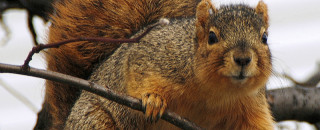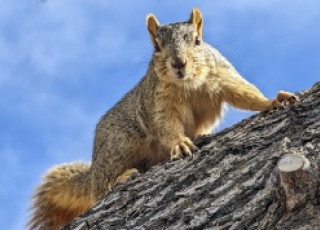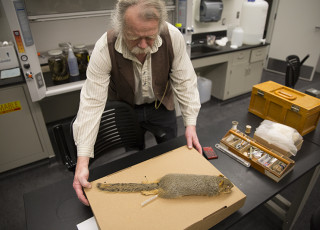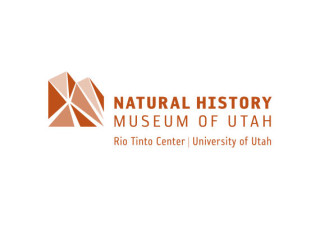NHMU Asks the Public to Participate in Squirrel Research
Salt Lake City, Dec. 2, 2023 – Seeing squirrels? We want to know! Become a citizen scientist for a week and let your winter adventures serve science! The Natural History Museum of Utah (NHMU) hosts its annual weeklong Squirrel Fest Dec. 2-10, 2023. The first 150 Citizen Scientists to submit a survey during Squirrel Fest will receive a free thank you gift for participating.
The festival encourages the community to contribute observational data about squirrels and it’s EASY! When you’re out looking for squirrels, report your findings and add your photos to NHMU’s squirrel survey form! By filling out the form, anyone can record squirrel observations to help biologists follow the spread of species and better understand their impacts on our environment. The mission of Squirrel Fest is to help track the distribution of squirrels in the state. You’ll be letting researchers know where they live, where they don’t live, and what they’re up to!
Led by Eric Rickart, NHMU’s curator of vertebrates, and Ellen Eiriksson, the museum’s Citizen Science program manager, this is critical long-term data that helps biologists better track animal population distribution and trajectory.
“The fox squirrel data has allowed us to study how a non-native species becomes established in a new environment. Since their arrival, fox squirrels have increased their range along the Wasatch Front and continue to adapt to the urban environment,” Rickart said. “This year we hope to receive observations from well-reported areas, like Salt Lake County, as well as areas where we haven’t yet recorded many squirrels, like Davis, Morgan, and Utah counties.”
The fox squirrel (Sciurus niger) was first reported in Utah in 2011 along the Jordan River in Salt Lake City. Originally native to the eastern US, its population in northern Utah has spread rapidly—especially in the urban landscape of Salt Lake City. The arrival of fox squirrels offers an opportunity to study, first-hand, the ecology of an introduced species.
“There is no way that the museum would be able to collect this amount of data without many observers around the state,” said Eiriksson. “People are continually submitting quality, in-depth descriptions of squirrel behavior. We want participants to know that their contributions of everyday squirrel observations are of great help to NHMU's ongoing research in the natural world.”
To participate in Squirrel Fest this year, just visit https://nhmu.utah.edu/events/squirrel-fest-2023 to find the survey and you’re ready to go! You can also learn more about Utah’s squirrels and all of NHMU’s Citizen Science projects.
###
About the Natural History Museum of Utah
The Natural History Museum of Utah is one of the leading scientific research and cultural institutions in the country. Established in 1963, the museum’s 10 permanent exhibitions are anchored by its state-of-the-art collections and research facilities containing almost 2 million objects. These collections are used in studies on geological, biological, and cultural diversity, and the history of living systems and human cultures within the Utah region. The museum hosts approximately 300,000 general visitors a year and provides one of the most spectacular private event settings in the Salt Lake City area. NHMU also broadens the reach of its mission through a variety of science-based outreach programs to communities and schools throughout Utah, reaching every school district in the state every other year.
Press contacts and links
-
Press Contact
Margaret Chamberlain
Public Relations Specialist



